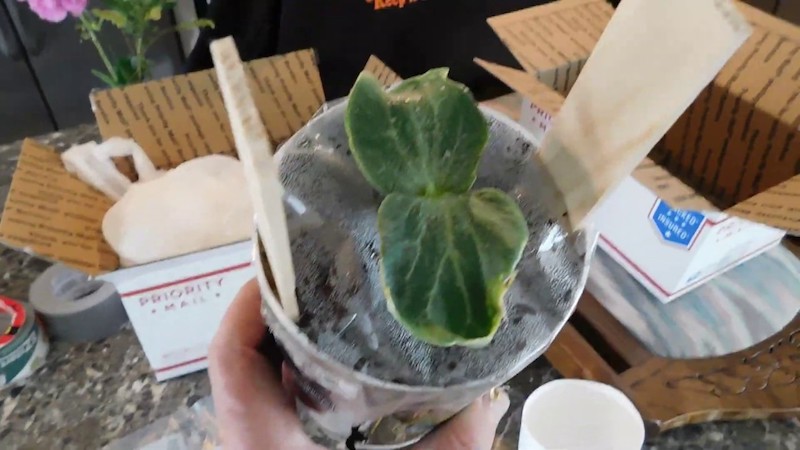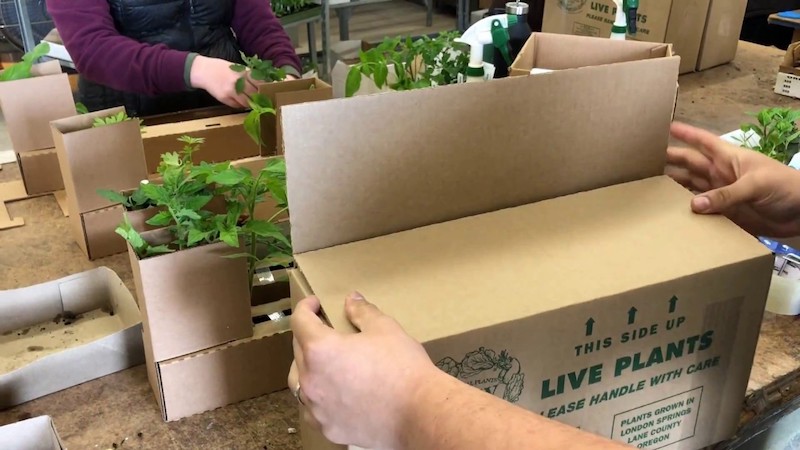Propagating plant cuttings is one of the best ways to ensure that the plant you are planning to raise will be exactly like the original plant. But if you need to ship cuttings somewhere, it can be a bit tricky. Sending your plant cuttings to a new destination requires precise actions so the cuttings stay viable.
Some factors to keep in mind when learning how to ship a plant cutting include the weather, the type of plant you have, and how long shipping will take. Whether you are shipping plant cuttings because you are moving to a new state, or you are shipping your plant cuttings as a part of your business, there are a few “non-negotiables.”
How to Ship Plant Cuttings
In order to prepare the plant cuttings for shipment, you will need:
- a plant cutting
- paper towels or sphagnum moss
- a small ziplock bag or cling wrap
- packing material
- a small postage box
When learning how to mail plant cuttings, your goal is to do your best to ensure the plant cuttings can survive a few days until they reach their destination.
You can either ship plant cuttings with roots that you have been cultivating in water, or you can ship plant cuttings that have yet to grow. When preparing how to ship unrooted plant cuttings, you can use either a paper towel or sphagnum moss.
Preparing The Cuttings
When preparing the cuttings for shipment, it is good to take the cutting on the day of shipment. You should cut the stem at an angle and use a healthy plant portion. Plant cuttings can be many different sizes, but small cuttings are usually more successful.
A small cutting will not spend much energy trying to stay alive and can use more energy to grow roots. If plant cuttings have lots of leaves, you should remove as many as possible. When you remove the leaves, you can help the plant cutting use less energy when it’s being shipped. Remove leaves at the top of the cutting.
How to Package Plant Cuttings?
To package your plant cuttings, you will need to use damp sphagnum moss or a damp paper towel to cover the end of the cutting, which will be rooted eventually. The cutting needs to stay moist for the shipment. If you are shipping a rooted cutting, it is better to use sphagnum moss to cover the cutting rather than a paper towel.
The sphagnum moss will help keep the roots covered so they don’t become dry. Next, use the ziplock bag or the cling wrap to cover the sphagnum moss or the paper towel. It is essential to ensure that it is sealed well so the moisture will not dry the cutting out.
If you prefer, you can loosely wrap the entire cutting in plastic. This will help keep any moisture out of the packing material, allowing the cutting to stay dry. Once you are done wrapping the cutting in plastic, gently place the cutting into the box, and be sure any extra space in the box is filled with paper or other packing material.
Need Movers? Your Move, Your Choice

Instant Exact Cost for Your Specific Move
Agoyu’s AI technology give you quick, precise estimates. Scan your room, receive instant quotes from multiple movers, and confidently select the best option for you.
STEP 1 OF 3
or Have a Top Mover Call Me Now!
Do it the old fashion way! A top mover will call you to provide an instant quote over the phone or at your house!
How to Transport Plant Cuttings?
You should try to ship your plant cutting early in the week, like on a Monday or Tuesday. Shipping your cutting early in the week will help prevent it from lingering in the mail over an entire weekend and hopefully allow it to be delivered by the end of the week.
If you are moving in the winter or shipping your cutting a long distance, you might consider using the express shipment. Your cutting has the best chance of living and making it through shipment if it does not take longer than three days to reach its destination. To help the cutting survive, you should label the box “Live Plant” or “Live Plant – Keep Out of the Sun.”
Both extreme heat and cold can affect the cutting, so try not to send the cutting if the weather is hot or cold. Let the person receiving the cutting know an estimation of when the plant should arrive to prepare to open the package as soon as possible.
Propagating The Cutting
The end of the cutting might need to be trimmed once it reaches its destination to give it a fresh wound. The cutting should then be placed in water for propagation. Propagating usually has three stages that need to take place.
- Separate a section off of the plant
- Nurture the cutting until it can grow its roots
- Replant the cutting

Shipping Plant Cuttings: Things to Keep in Mind
When learning how to mail plant cuttings, it is crucial to keep these things in mind before shipment.
1. Take Cuttings As Close to Shipping As Possible
Take your cuttings as close to the shipping time to get the best results. You can do this either the day before or the day of shipment. You should look for a healthy portion of your plant and take the cutting from that section, cutting that section of the plant diagonally.
2. Keep Two Leaves On Top
You will need to remove all of the leaves of the plant cutting but should keep only a few leaves on top. Leaving a couple of leaves on top will help conserve the water remaining on the plant stems. Therefore, the plant will not become dehydrated during the shipment, and it will be easier for the branch to support itself.
3. Use Cling Wrap and a Paper Towel to Wrap the Bottom Half
Wrap the bottom portion of your cutting with a damp paper towel. Then, secure the cutting with a few layers of cling wrap. The cling wrap will ensure that water is not lost from the damp paper towel.
4. Use Sphagnum Moss to Wrap Cuttings With Roots
If you are mailing plant cuttings with roots, you probably will want to use sphagnum moss. Sphagnum moss is one of the best materials you can use to prevent the roots from drying out.
5. Ship Them On a Monday Or a Tuesday
Ship the cutting early in the week, like Monday or Tuesday. If you ship the cutting mid-week, there is a chance that the cutting could end up sitting in the post office over the weekend. The earlier the week you ship the cutting, the earlier it will arrive at its destination.





